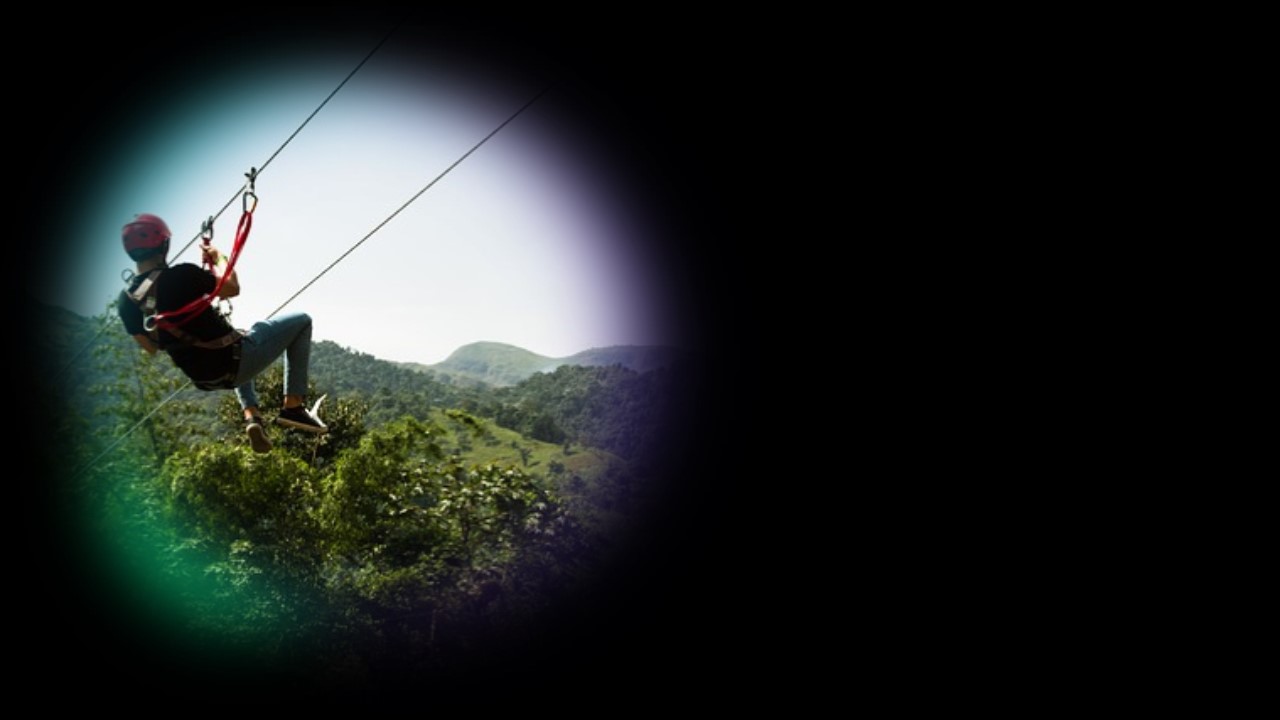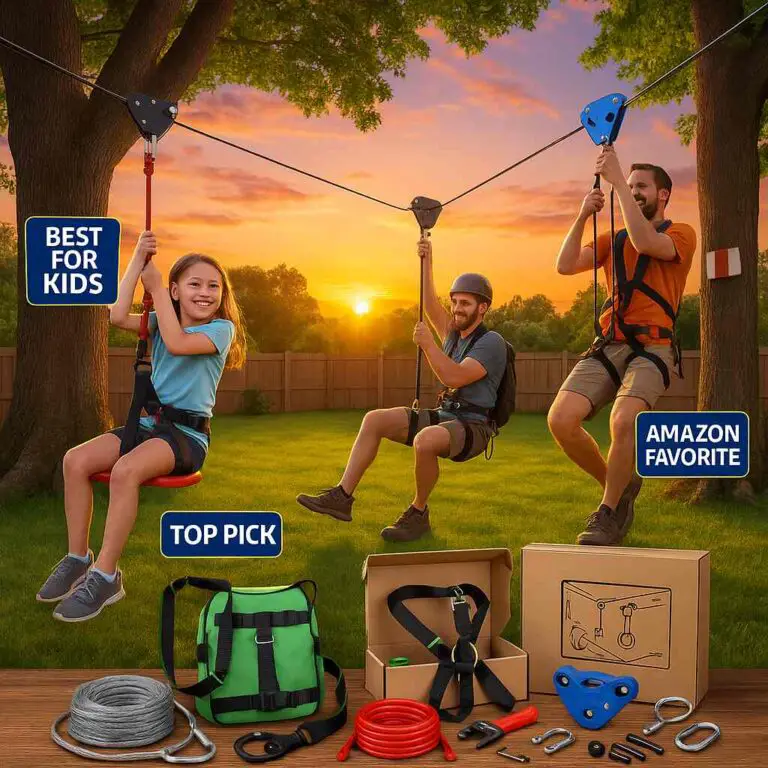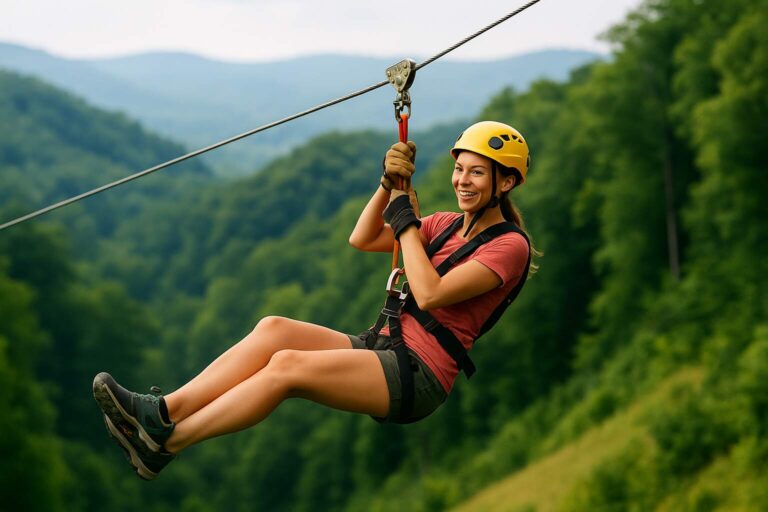Ziplining is a thrilling experience that allows you to soar through the air and take in breathtaking views of the surrounding landscape. However, weather conditions can significantly affect your ziplining experience, and one of the most common questions people ask is whether they can zipline in the rain.
The answer is yes, you can zipline in the rain, but it’s important to be aware of the safety concerns, weigh the risks and benefits, and follow best practices to ensure your safety and maximize your enjoyment.
In this article, I’ll explore the pros and cons of ziplining in the rain, the safety concerns you should be aware of, and the best practices to follow if you decide to take on this adventure. So, can you zipline in the rain? Let’s find out!
What You Need to Know About Ziplining in the Rain
Ziplining in the rain is a unique experience that can offer some benefits as well as pose some risks. Here’s what you need to know:
Safety Concerns
- Slippery Conditions: One of the most significant risks of ziplining in the rain is that the cables and platforms can become slippery, making it more challenging to maintain your footing. This can increase the risk of slipping and falling, which can result in serious injuries.
- Increased Risk of Lightning Strikes: Rainstorms often come with lightning, which can pose a severe threat to anyone on a zipline. If lightning strikes a zipline or any part of the equipment, it can cause significant harm to the rider.
- Equipment Wear and Tear: Ziplining equipment is designed to be used in dry conditions. Rainwater can damage the cables, pulleys, and other components of the equipment, increasing the risk of equipment failure.
Benefits of Ziplining in the Rain
- Reduced Crowds: Zipline tours tend to be less crowded on rainy days, which can offer a more exclusive experience.
- Lush Scenery: Rain can create stunning visuals and a more lush environment for ziplining.
- More Adrenaline Rush: Ziplining in the rain can provide a more exhilarating experience due to the increased speed and slipperiness of the course.
Overall, ziplining in the rain can be a unique and exciting experience. However, it’s important to be aware of the safety concerns and weigh the risks and benefits before deciding to go for them. In the next section, I’ll discuss best practices to follow if you decide to zipline in the rain.
Best Practices for Ziplining in the Rain
If you decide to go zip lining in the rain, there are several best practices you should follow to ensure your safety and maximize your enjoyment. Here are some tips:
Proper Attire
- Rain Jackets: Wear a waterproof rain jacket to keep you dry while ziplining.
- Water-resistant Pants: Wear water-resistant pants or shorts to avoid getting wet and prevent chafing.
- Durable Shoes: Wear closed-toe, sturdy shoes that offer good traction on wet surfaces.
Choosing a Safe Zipline Tour
- Research and Read Reviews: Research the Zipline tour company and read reviews from previous customers to get an idea of their safety record and customer satisfaction.
- Verify Tour Operator’s Certifications: Make sure that the tour operator is certified by a reputable organization such as the Association for Challenge Course Technology (ACCT) or Professional Ropes Course Association (PRCA).
- Check Weather Forecasts: Check the weather forecast before you go ziplining to ensure that it’s safe to do so.
Listening to Instructions
- Follow the Guide’s Directions: Listen carefully to the instructions given by the zipline guides and follow their guidance.
- Keep Your Hands on the Trolley: Keep your hands on the trolley and avoid touching the cables or anything else on the zipline course.
- Stay Alert and Watch for Obstacles: Stay alert and watch for obstacles such as trees or other riders on the course.
By following these best practices, you can enjoy ziplining in the rain while staying safe and comfortable. However, it’s essential to remember that safety should always be your top priority. If you’re unsure about the safety of ziplining in the rain, it’s better to postpone your trip until the weather clears up.
Conclusion
In conclusion, ziplining in the rain can offer a unique and exciting experience for adventure-seekers. However, it’s important to be aware of the safety concerns and weigh the risks and benefits before deciding to take on this adventure. Slippery conditions, increased risk of lightning strikes, and equipment wear and tear are all significant safety concerns to consider. Still, reduced crowds, lush scenery, and an increased adrenaline rush are all benefits of ziplining in the rain.
To ensure your safety and maximize your enjoyment, follow the best practices I’ve outlined in this article. Wear appropriate attire, choose a safe zipline tour company, and listen to instructions given by the guides. By taking these precautions, you can safely enjoy the thrill of ziplining in the rain.
Remember, safety should always be your top priority when participating in any adventure activity. If you have any doubts or concerns about ziplining in the rain, it’s best to postpone your trip until the weather clears up. With these tips in mind, you can have an unforgettable ziplining experience, rain or shine!








